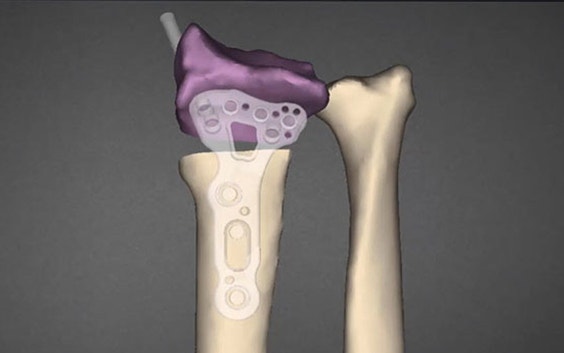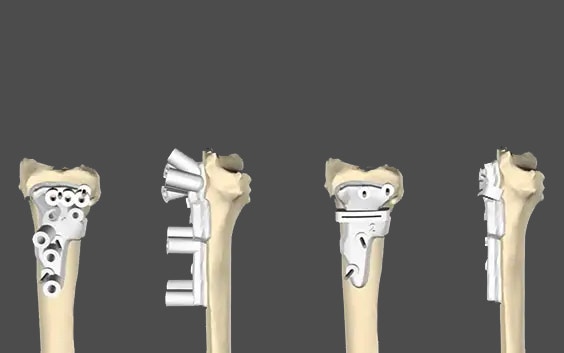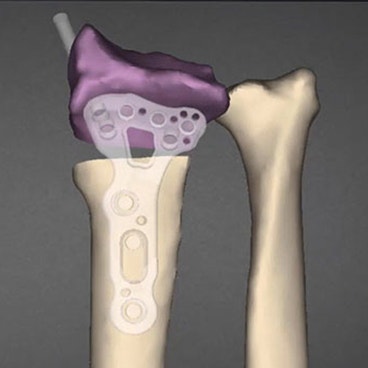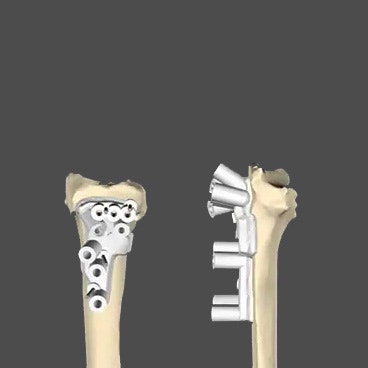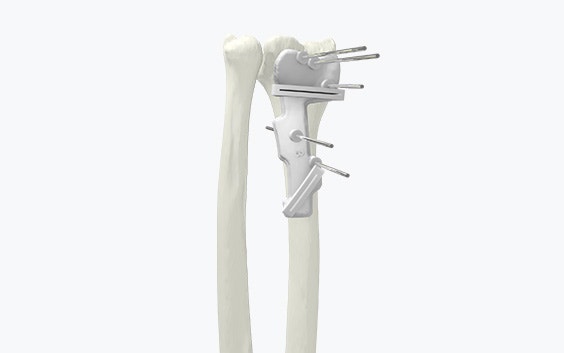3D Planning and Guides for Osteotomies
Personalization meets excellence
More than 80%1 of rotational deformities go unnoticed in X-rays, and 60%2 of osteotomies do not obtain the planned correction. Don’t compromise on the outcome of your bone deformity corrections. Personalized 3D solutions can help you achieve more predictable outcomes and high patient satisfaction. Streamlined collaboration and simplified design approval processes are supported by our easy-to-use digital platform.
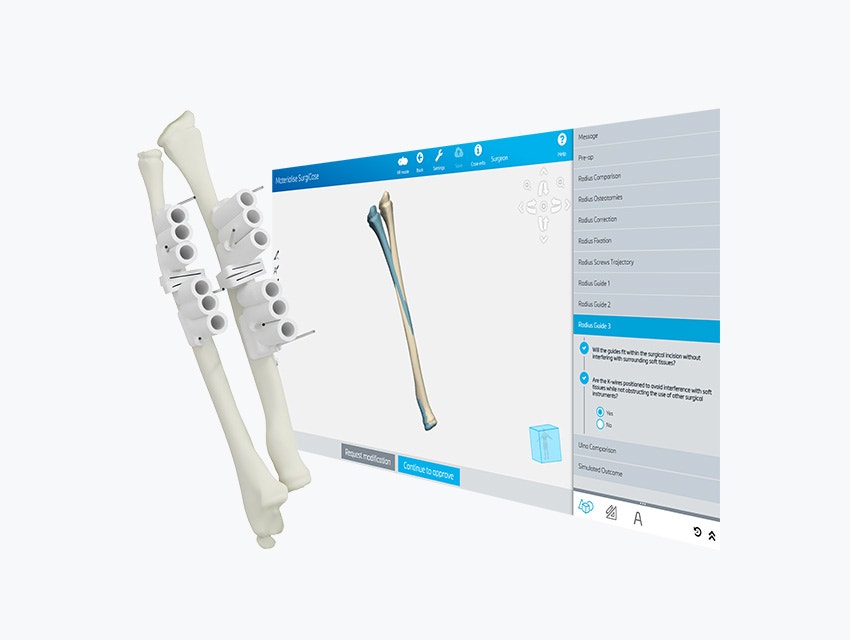

Benefits of working with us
Unmatched expertise
Easily collaborate with clinical engineers using an intuitive online 3D planner and tap into our extensive expertise in 3D planning and printing.
Gain confidence
Preoperative planning with our clinical engineers helps you be better prepared, reduce intra-operative decisions, and educate your patients.
Find the best fixation
We collaborate with leading plate manufacturers to optimize fixation possibilities.
Improve patient outcomes
Clinical evidence shows postoperative improvement of pain and function with good patient satisfaction.3,4,5
How we support you
Easy-to-use digital platform
SurgiCase is an all-in-one, web-based collaboration platform where you can upload images, review and approve your plan, and collaborate with your clinical engineer. Securely access the platform from any browser.
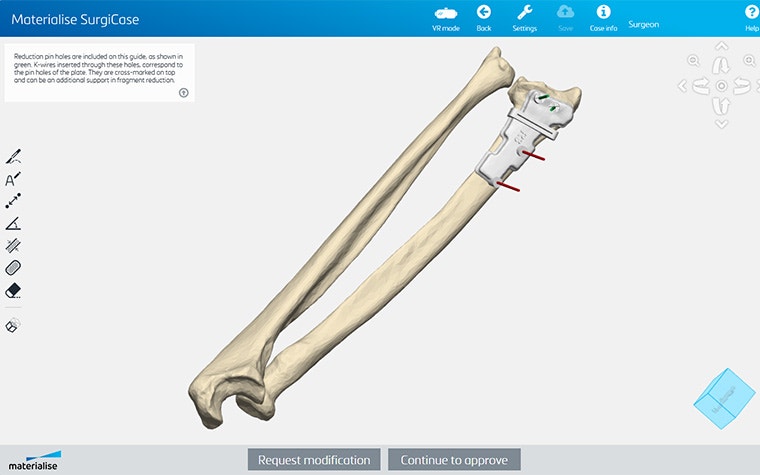
Unique 3D analysis
To start, 3D models are created based on your patient’s CT scans. By overlaying the mirrored, contralateral side on top of the surgical side, you can analyze the deformity compared to the patient’s healthy anatomy. Based on this analysis, you can get a more precise definition of the required correction.
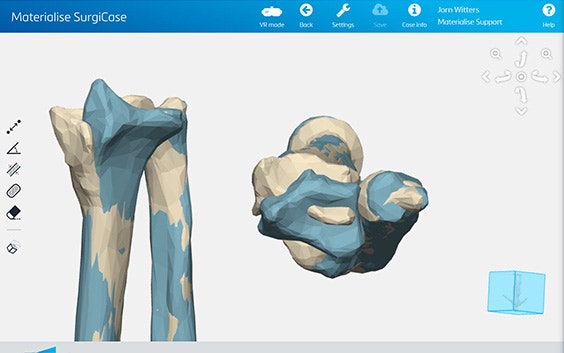
Clinical engineering
Our clinical engineers will discuss the possible correction strategies during the planning session. You will work interactively to finalize and tailor the pre-surgical plan that fits the patient’s needs, your preferences, and the technical difficulties of the procedure.
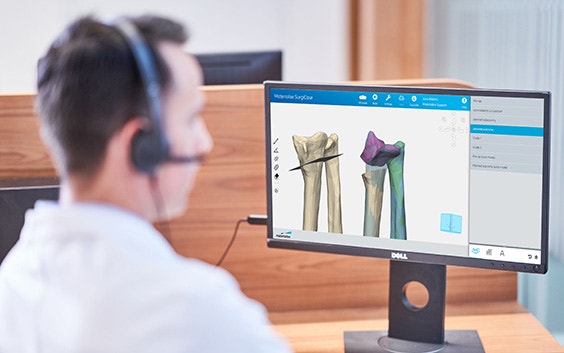
Guide Stability technology
After the plan’s approval, our engineers will design surgical guides to fit securely on the patient’s bone using a unique feature developed by Materialise, called Guide Stability Analysis, which ensures optimal stability during the procedure for every guide.

Personalized instrumentation
The most crucial step during the surgery is positioning the guide at the intended position. 3D-printed anatomical models with guide base outlines can assist you in putting the guides in the correct position and give a tactile reference of the fit before the surgery. The models are also an important physical reference for plate bending.
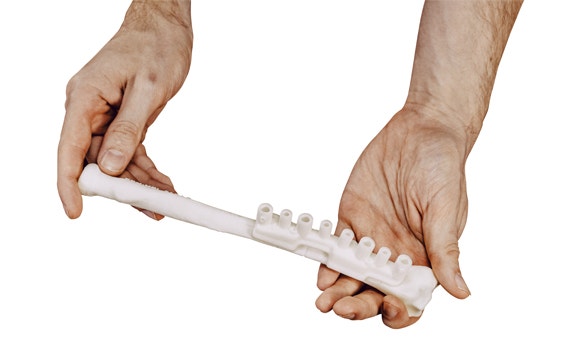
Indications
Malunions and non-unions
Caused by trauma for adult and pediatric patients and lead to a loss of function, pain, and deformity
Congenital deformities
For example, Madelung's deformity
Osteoarthritis
For early-stage osteoarthritis of the knee and ankle
Extremities/anatomies
Clavicle guides
3D-printed drilling and cutting guides
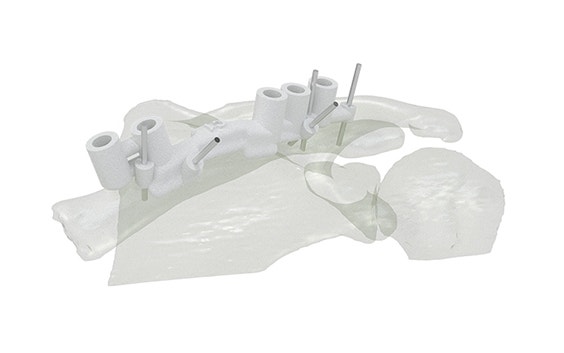
Distal Humerus guides
3D-printed drilling and cutting guides
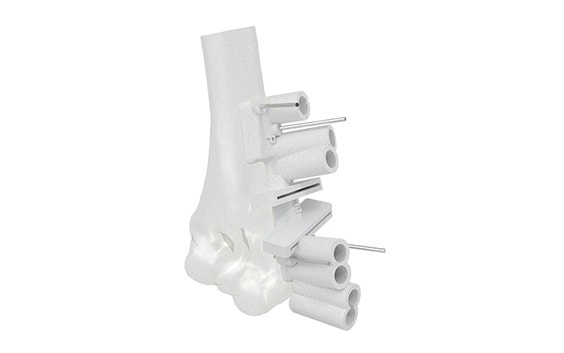
Forearm guides
3D-printed drilling and cutting guides
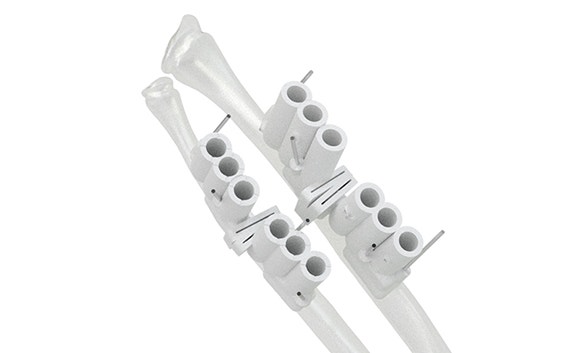
Proximal Humerus guides
3D-printed drilling and cutting guides
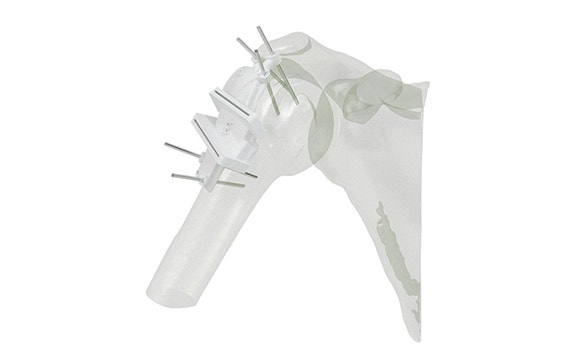
Wrist guides
3D-printed drilling and cutting guides

Ankle guides
3D-printed drilling and cutting guides
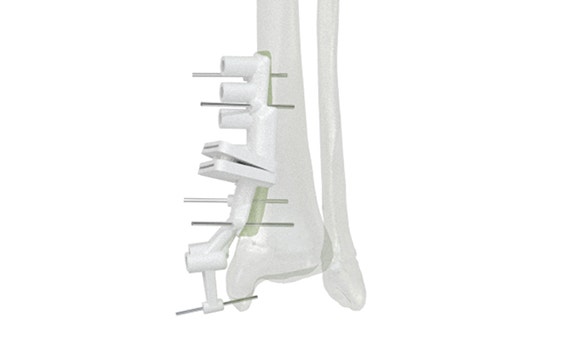
Hip guides
3D-printed drilling and cutting guides
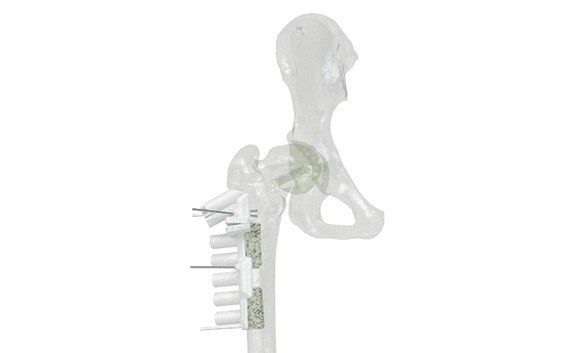
Knee guides
3D-printed drilling and cutting guides
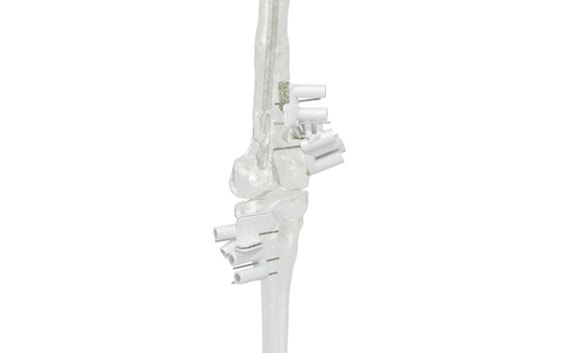
Clinical evidence
As described in scientific literature, Materialise’s personalized system for osteotomies may reduce operative and fluoroscopy time and add precision to the definition of the required correction and execution. It is reported to enable greater postoperative improvement of pain, patient satisfaction, and DASH scores than conventional surgical methods.
3D corrective osteotomies improve pro-supination
Outcomes of 3-D corrective osteotomies for paediatric malunited both-bone forearm fractures (2021)
3D technology holds the potential to achieve consistent accuracy of very complex corrections
Accuracy of 3D Virtual Planning of Corrective Osteotomies of the Distal Radius (2013)
3D-planned patient-specific guides and implants allow the surgeon to perform precise corrective osteotomies of complex multiplanar forearm deformities
Corrective Osteotomy for Malunited Diaphyseal Forearm Fractures Using Preoperative 3-Dimensional Planning and Patient-Specific Surgical Guides and Implants (2017)
3D modeling permits complex and multiple osteotomies to be done safely to achieve deformity correction in children
Preoperative Computer Simulation and Patient-specific Guides are Safe and Effective to Correct Forearm Deformity in Children (2017)
Get inspired
Discover how others benefit from our personalized solutions for osteotomies.
Learn more and get started
See how leading experts are using personalized solutions for osteotomies.
Frequently asked questions
L-102606-02
Reference:
1 Preoperative Computer Simulation and Patient-specific Guides are Safe and Effective to Correct Forearm Deformity in Children
2Corrective Osteotomies in Malunions of the Distal Radius
3Roth, Kasper C et al. “Outcomes of 3-D corrective osteotomies for paediatric malunited both-bone forearm fractures.”
4Byrne, Ann-Maria et al. “Corrective Osteotomy for Malunited Diaphyseal Forearm Fractures Using Preoperative 3-Dimensional Planning and Patient-Specific Surgical Guides and Implants.”
5Bauer, Andrea S et al. “Preoperative Computer Simulation and Patient-specific Guides are Safe and Effective to Correct Forearm Deformity in Children.”
